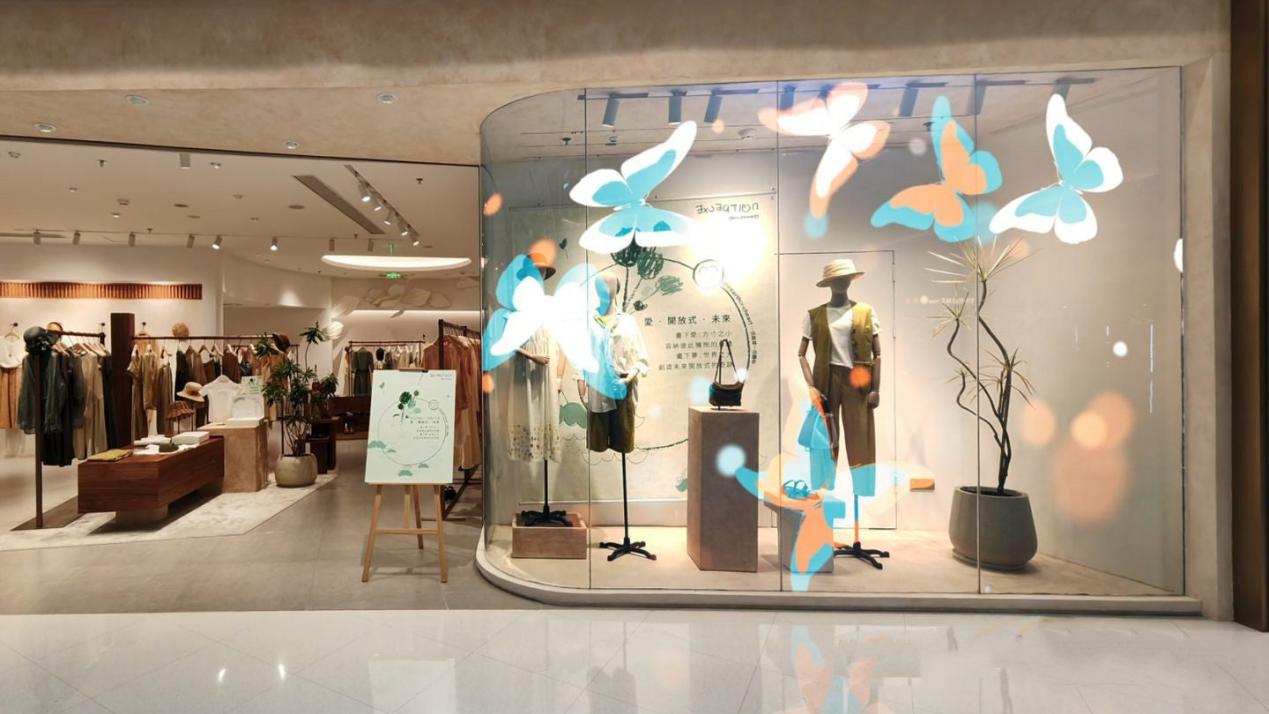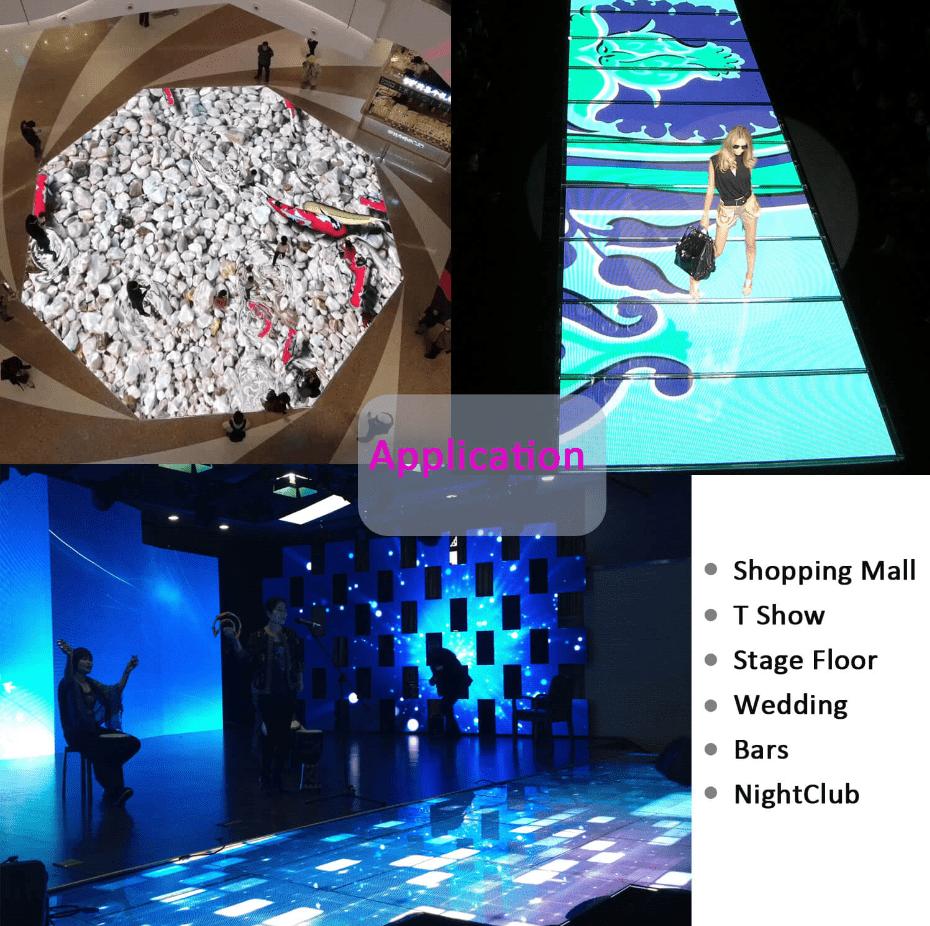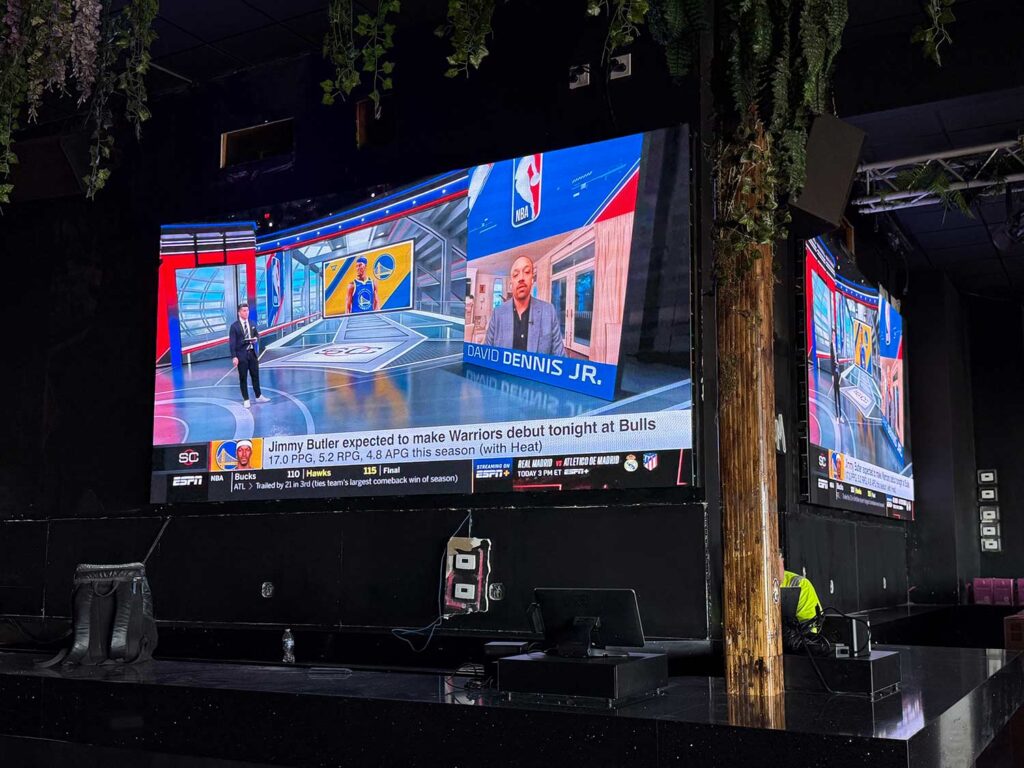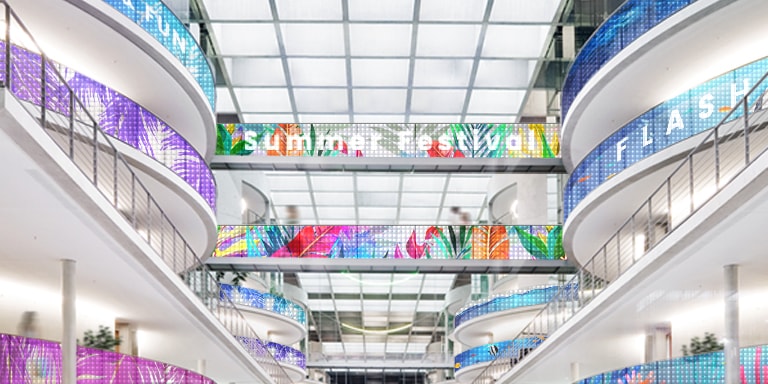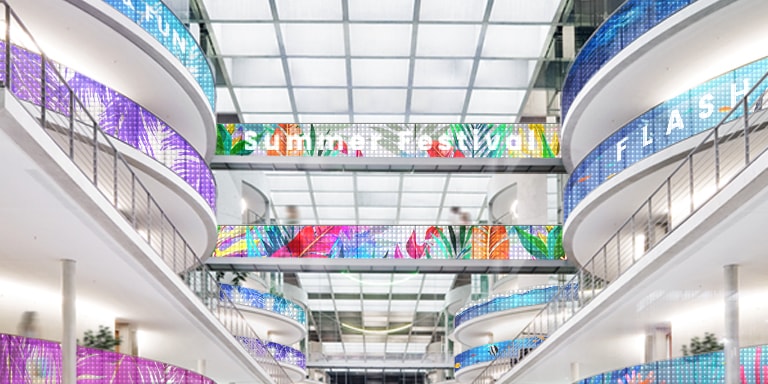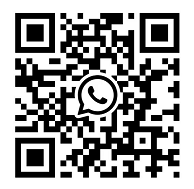In the rapidly evolving world of LED display solutions, one technology has surged to the forefront in the past one to two months: transparent and ultra-thin LED film displays. For retailers, brand environments, architectural façades and experiential spaces, this format is becoming a powerful medium for visual communication and engagement. At the same time, fine-pixel-pitch indoor LED walls, foldable rental LED cabinets and energy-efficient outdoor LED displays continue to push the boundaries of what digital signage can deliver.
1. Current industry snapshot: What’s driving demand now?
Transparent displays become mainstream
In 2025 the transparent display segment is accelerating rapidly. According to market research, the transparent‐display segment (including transparent LED displays) is expected to account for a significant share of the total LED display market this year.
Particularly in retail storefronts and architectural glass façades, the ability to layer video content over transparency is highly valued: brands want to deliver motion, interactivity and storytelling without sacrificing visibility of the interior or exterior view.
Fine-pixel and micro/mini LED continue to advance
While transparent LED film attracts attention, fine‐pixel pitch indoor LED walls (P0.7–P1.8) and emerging micro-LED / mini LED technologies continue to gain traction. These formats offer ultra-high resolution, lower power consumption and are increasingly seen in broadcast studios, control rooms and high-end retail.
Energy-efficiency and creative formats are essential
Brands and integrators now insist on display solutions that are energy-efficient, serviceable and adaptable. Flexible, foldable and creative LED formats (rolling floors, LED posters, curved surfaces) along with transparent film meet the demand for novel form-factors.
2. Product spotlight: Transparent LED Film from EnvisionScreen
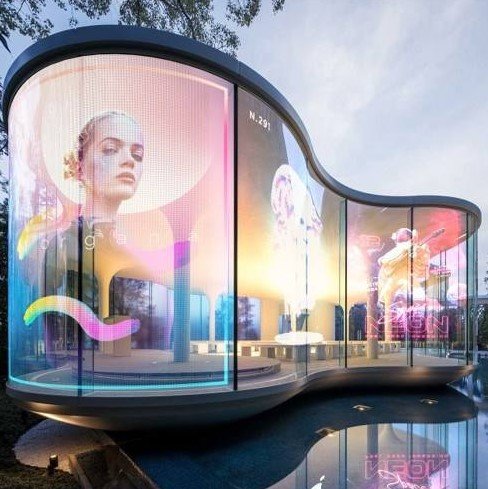
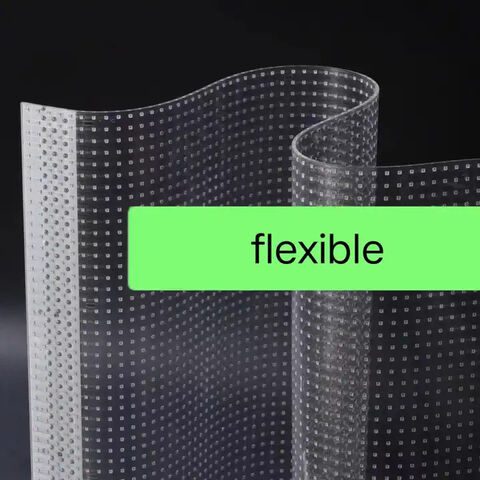
What is it?
Transparent LED film (also known as adhesive glass LED or transparent LED display film) is a lightweight, ultra-thin LED matrix designed to be mounted on existing glass surfaces—such as storefront windows, mall atriums or interior glass walls. It retains a high level of transparency while enabling full-color video playback.
For example, models can maintain visibility through the glass, while producing bright motion content that draws attention from outside. This means the glass does not become a dark box, but a dynamic brand canvas.
Why it’s trending
- Retailers are increasingly seeking window displays that do more than static prints: they want dynamic video, interactive triggers and compelling brand storytelling. Transparent LED film enables that without blocking the view.
- Installation time and weight are significantly reduced compared with traditional LED video walls clamped in front of glass. Because the film is thin and often self-adhesive or module-based, it supports retrofit projects.
- Advances in brightness, driver efficiency and transparency rate mean that transparent LED film is no longer just a novelty: it’s viable for daytime use in high-ambient light environments. For instance, one industry article notes transparency rates improving up to ~98% in some models.
3. Customisation workflow: From concept to deployment
Here’s a detailed step-by-step blueprint for how a customer (brand, retailer, integrator) can engage with EnvisionScreen to deliver a custom LED display project — especially focussing on transparent LED film but equally applicable to other LED display formats.
Step 1: Define objectives and site analysis
- Clarify the primary goal: Is this a window display for brand storytelling? An interactive façade for retail? A visual media wall inside a public space?
- Determine key performance indicators (KPIs): increase in foot traffic, dwell time, brand recall, daily impressions, energy budget.
- Conduct a site survey: measure glass surface dimensions, verify structural load, assess ambient lighting (daylight vs. dusk), examine surface condition (cleanliness, flatness), check power/network access.
Step 2: Choose format and specs
- Choose the right format: Transparent LED film for glass; Fine-pixel pitch LED wall for indoor high-resolution; Rental/foldable LED for events; Flexible/rolling LED for creative curves.
- Select pixel pitch and resolution: For transparent film, pixel pitch may be wider (e.g., P4–P10) depending on viewing distance; for close-view indoor walls, choose P0.9–P1.8.
- Specify brightness: For glass façades with daylight exposure, aim for high brightness (e.g., ≥4,000 nits) to maintain legibility.
- Determine transparency rate: Ensure the film preserves enough sight-through ratio so the interior remains visible and the façade retains architectural aesthetics.
- Choose serviceability and longevity: Ask for modular service access, spare parts availability, and LED lifetime (50,000–100,000 hours typical).
Step 3: Mechanical & installation planning
- Prepare the glass: Clean, de-oil, ensure flat surface; correct any warps or imperfections. For curved glass, confirm the film’s bending radius capability.
- Confirm installation method: Many transparent LED films use adhesive backing; some may require a mounting frame or support structure.
- Cable routing and power: Determine nearest power supply, ensure appropriate power cabling, plan for access for module replacement.
- Cooling and ventilation: Even low-profile film must dissipate heat; verify ambient temperature, sunlight exposure and ventilation.
- Installation timeline: Usually factory production lead time, followed by shipping, onsite installation, commissioning and content launch.
Step 4: Content strategy & control
- Map content to viewing scenarios: For a window display, morning daylight vs. evening backlit conditions may differ.
- Schedule creative loops: Use brand video, motion graphics, interactive QR codes, real-time data (e.g., social feeds, weather).
- Integrate CMS/remote monitoring: Choose a media player/CMS that supports scheduling, remote brightness dimming, reporting.
- Align content resolution to display specs: Ensure content matches resolution, color calibration and pixel pitch for best clarity.
Step 5: Commissioning & maintenance
- Perform factory acceptance testing: colour uniformity, brightness, refresh rate, module repair readiness.
- On-site commissioning: calibrate brightness to ambient light, verify content playback, test remote monitoring and alert functions.
- Document maintenance plan: module replacement, service access, spare parts inventory, cleaning schedule (dust removal, glass cleaning).
- Monitor performance: track dwell time, footfall impact, energy consumption, content analytics.
Step 6: Project hand-over & evaluation
- Provide training to on-site staff: use of CMS, scheduling content, basic troubleshooting.
- Hand over warranty, spare module policy and service contract.
- Evaluate outcomes: measure KPIs (traffic increase, dwell time, brand engagement), report ROI and plan next phase.
4. Why choose EnvisionScreen for wholesale/custom LED display solutions?
When you’re planning a large‐scale or multi-location LED rollout (retail chain, global brand, architectural façade program), the choice of supplier matters. Here’s why EnvisionScreen stands out:
- Comprehensive product range: From transparent LED film to fine-pixel indoor walls, foldable rental cabinets and flexible/curved LED formats, EnvisionScreen offers a one-stop LED display supplier.
- Customization and factory-direct capability: EnvisionScreen provides customization of size, pixel pitch, brightness, module layout and mounting method — suitable for wholesale bulk orders and global deployments.
- Fast time-to-market: For retailers and billboard operators deploying across multiple sites, a partner who can manufacture, ship and support globally is essential.
- Creative formats for modern DOOH: With transparent film and flexible/curved LED solutions, the supplier supports new experiential signage formats (window-to-window, atrium displays, media façades).
- Support and service: From installation guidance, remote monitoring platforms, spare module programs through to maintenance support — EnvisionScreen is positioned for large-scale commercial projects.
5. Product features & advantages (Markdown format)
Transparent LED Film (Adhesive Glass LED Display) – Features & Advantages
- Ultra-thin and lightweight: easy retrofit to existing glass façades and interior partitions with minimal structural reinforcement.
- High transparency: retains visibility through glass surfaces while delivering vivid video content.
- High brightness options: designed for high-ambient light environments for storefronts and façade applications.
- Flexible content mapping: supports full-color video, motion graphics and dynamic data overlays.
- Quick installation and low visual impact: film or module format attaches directly to glass, preserving architectural aesthetics.
- Low operation noise and fan-less design: ideal for retail and public spaces.
- Modular and serviceable design: facilitates in-field module replacement and maintenance.
- Energy-efficient LED drivers and long lifetime: lower power consumption and reduced lifetime cost.
Fine-Pixel Pitch Indoor LED Walls (P0.9–P1.8) – Features & Advantages
- Ultra-high resolution: ideal for close-view applications such as control rooms, showrooms and broadcast studios.
- Excellent colour uniformity & HDR support: enhances brand messaging with vivid detail and accurate colour.
- Optimised for short viewing distances: delivers crisp visuals at eye level for interactive installations.
Flexible / Foldable / Creative LED Products (Rolling Floors, LED Posters, LED Ribbons) – Features & Advantages
- Creative form-factors: curves, folds, free-form shapes enable immersive environments and experiential marketing.
- Fast assembly/disassembly cycles: rental-ready for events, tours and pop-up activations.
- Durable surfaces and indoor/outdoor configurations: tailorable to fixed or mobile use.
6. Application scenarios – where in practice these solutions shine
- Retail storefronts & flagship stores: Glass-mounted transparent LED film transforms the storefront into a live video billboard while preserving line-of-sight into the store.
- Shopping malls & atrium installations: Suspended transparent LED film or curved flexible LED ribbons enable immersive digital signage in glass-rich common spaces.
- Corporate lobbies, showrooms, experiential centres: Fine-pixel pitch LED walls showcase brand films, product demos and immersive storytelling at close proximity.
- Broadcast studios & XR/virtual production volumes: High-resolution LED walls, even transparent or curved, are used as backdrops and virtual sets for camera production
- Outdoor DOOH & media façades: High‐brightness outdoor LED walls and transparent LED film on glass façades for media buildings, airports or smart city deployments.
- Events, concerts and touring activations: Foldable/rental LED cabinets, LED rolling floors or LED posters enable fast-turn event installations and immersive visitor experiences.
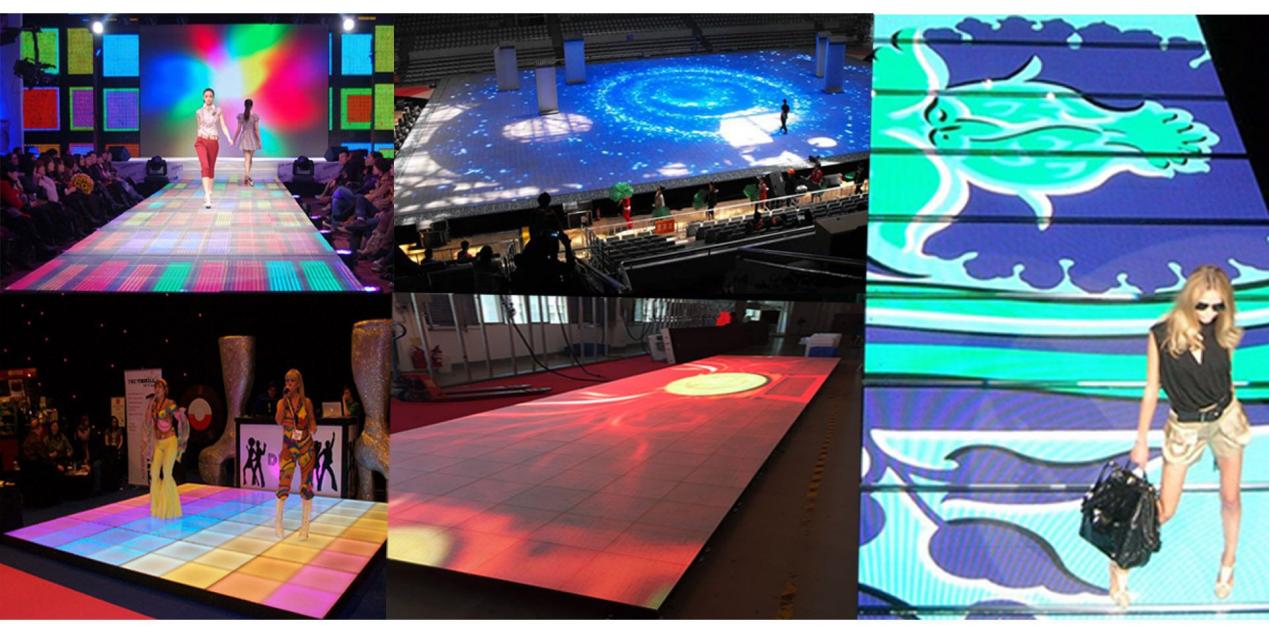
7. Common questions and answers
Q: How transparent is transparent LED film? Will it block the storefront view?
A: Transparency levels vary by model but modern transparent LED film can deliver upwards of 50%–80% translucency, maintaining interior visibility while delivering bright motion content. Proper selection and site testing ensure both visual impact and transparency.
Q: Can LED film work in direct sunlight or high ambient light?
A: Yes—certain models are designed for high brightness (such as 3,000–4,000 nits or more) and use anti-glare coatings or high contrast modules that maintain legibility even in bright daylight. It’s critical to specify the ambient light conditions and confirm the film’s performance accordingly.
Q: What is the typical lifetime and warranty?
A: Quality LED modules generally are rated for 50,000 to 100,000 hours of operation under defined conditions. EnvisionScreen offers factory warranty and support programmes; customers should verify exact terms when placing orders.
Q: How is content managed for these displays?
A: A content management system (CMS) that supports scheduling, remote monitoring, brightness compensation and data-analytics is highly recommended. Many modern digital signage deployments incorporate AI/IoT features for dynamic scheduling and audience measurement.
Q: What about maintenance and module replacement?
A: Transparent LED film modules are often designed to be modular and serviceable. For fixed installations, spare parts and service access should be planned in advance. EnvisionScreen offers support frameworks for wholesale customers.
8. Typical project timeline – Example: 50 m² transparent LED film for retail window rollout
- Week 0: Project kickoff — definition of objectives, KPIs, site measurement and need-analysis.
- Week 1–2: Design phase — specify film size, pixel pitch, brightness, transparency, mechanical fixings; site drawings and glass preparation plan.
- Week 3–6: Factory production — module manufacturing, colour calibration, quality control, packaging.
- Week 7: Shipping and logistics — depending on destination, customs clearance and site preparation.
- Week 8: On-site installation — adhesion or mounting of film, power and controller connection, commissioning.
- Week 9: Content upload, CMS configuration, system handover, training staff.
Actual timelines vary based on custom complexity, shipping logistics and volume of order.
9. Troubleshooting & best practices
- Manage reflections and glare: Use anti-glare glass treatments or back-film coatings if reflections impair visibility.
- Verify power infrastructure: Ensure stable electrical supply, surge protection, and consider backup or UPS if display uptime is critical.
- Plan for heat dissipation: Transparent film or thin modules still generate heat—adequate ventilation or ambient control ensures long lifespan.
- Colour calibration and consistency: Factory calibration is important, but for multi-site deployments ensure all units match in colour temperature, brightness and uniformity.
- Content relevance and motion design: Even the best hardware needs good content. Use motion graphics with clear text, consider viewing distance and pixel pitch, and rotate content periodically to avoid viewer fatigue.
- Service access planning: Even if modules seldom fail, plan for replacement access, spare module inventory and local technician readiness.
10. Market momentum and opportunity
The global market for transparent and glass-integrated LED displays is growing rapidly. One recent analysis states: “The competitive landscape for transparent displays will become increasingly diverse,” and by 2026 high-end commercial complexes are expected to deploy tens of thousands of transparent displays.
In parallel, the broader display market is shifting toward formats that emphasise experience, interactivity and architectural integration—transparent LED film is a perfect fit.
For brands, integrators and AV professionals, this means the opportunity is no longer about simply “putting up a big video wall.” It’s about rethinking how visual media integrates into architecture, glass and public spaces. With the right hardware partner, formats like transparent LED film offer a way to convert surfaces into immersive brand canvases.
11. Campaign idea: “Window to Wow” Retail Experience
Imagine a flagship brand’s store where the window is no longer a passive glass block but a dynamic, moving story board. Using transparent LED film, the retailer installs a 30 m² glass-mounted LED film display at the storefront. During daytime, high-brightness content loops with product hero films; in the evening the transparency remains but dark-background video delivers immersive storytelling with minimal visual obstruction from the glass.
Implementation steps:
- Specify film at P4 or P6 for the viewing distance (outside pedestrian walkway, ~5-10 m).
- Choose 4,000 nits brightness to stand up to daylight.
- Transparency ratio at ≥50% so store interior remains visible.
- Content schedule: 9 am-12 pm product hero loop, 12 pm-5 pm interactive QR/call-to-action, 5 pm-closing high-impact motion show.
- Use EnvisionScreen’s LED film product line and CMS for scheduling and remote monitoring.
- Outcome: Increased footfall, longer window dwell time, measurable uplift in conversions.
This kind of deployment reflects how retailers are now leveraging digital signage not just for messaging but for architecture-turned-media.
12. Final thoughts
2025 is clearly the year when display hardware evolves from “big flat boxes” to integrated environmental media. Transparent LED film, fine-pixel pitch LED walls and flexible creative LED formats are accelerating that shift. What used to be futuristic is now practical. For brands and system integrators, the opportunity lies in picking the right format, the right partner and the right content strategy.
With its broad product portfolio, global manufacturing capability and customisation focus, EnvisionScreen is well positioned to help clients capture this new wave of LED display innovation. Whether transforming storefronts, making architectural façades dynamic or building immersive indoor walls, the right LED solution can turn a surface into a high-impact engagement moat.
Post time: Oct-24-2025
